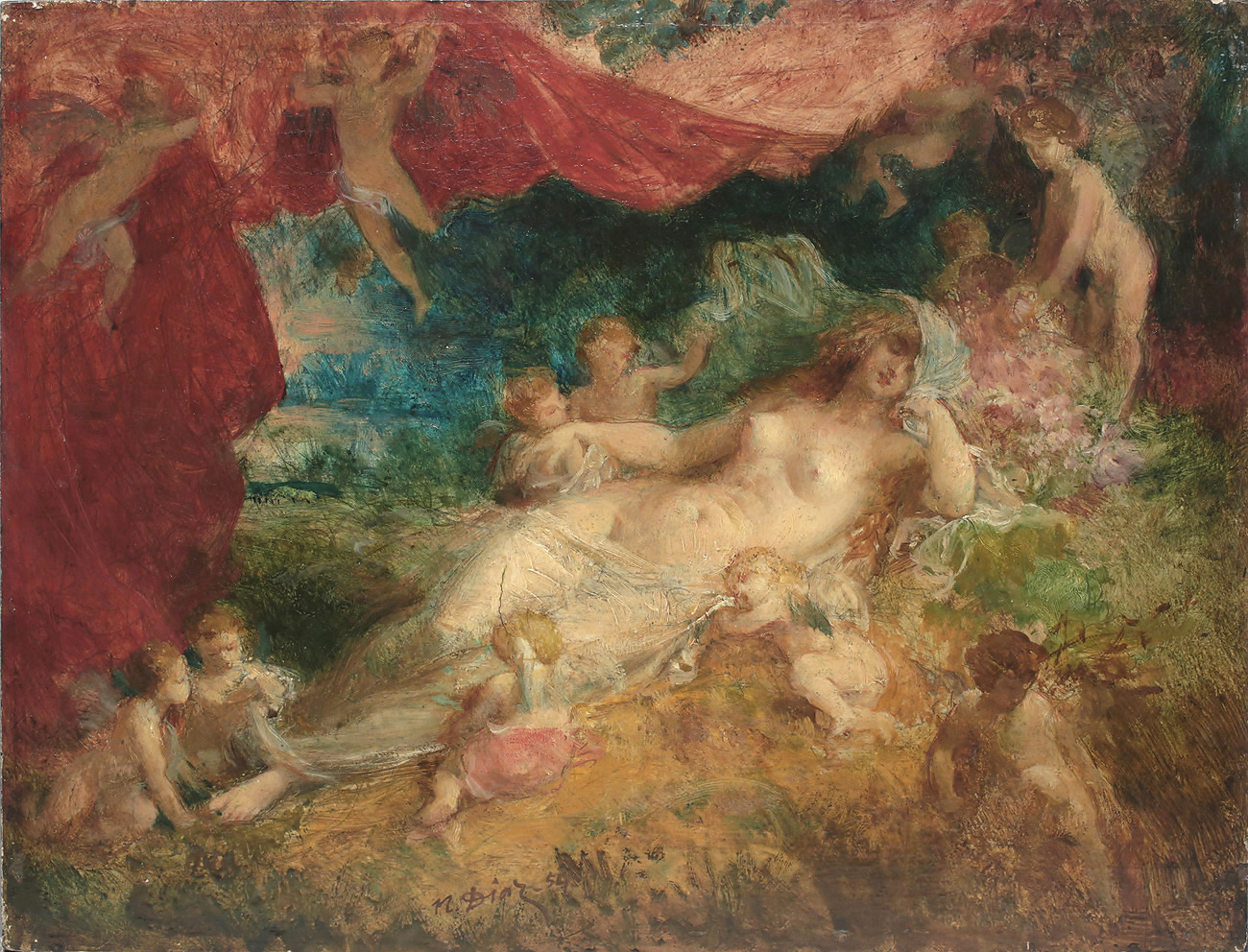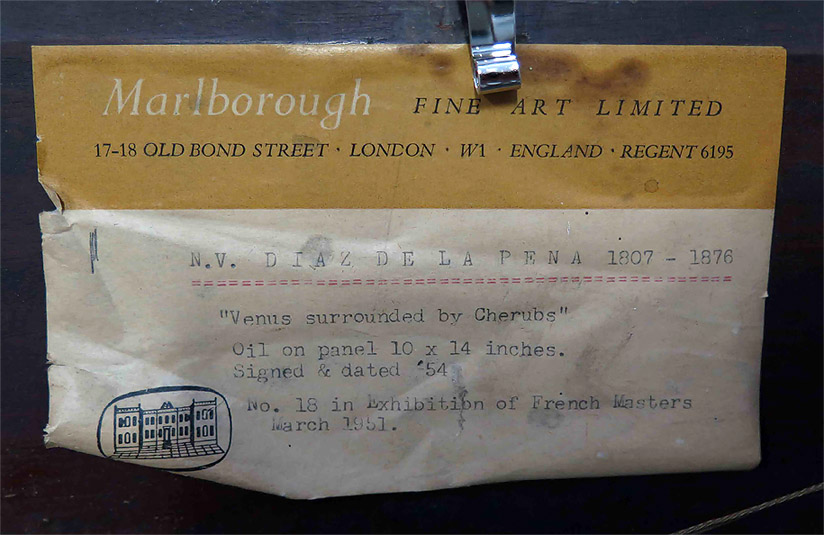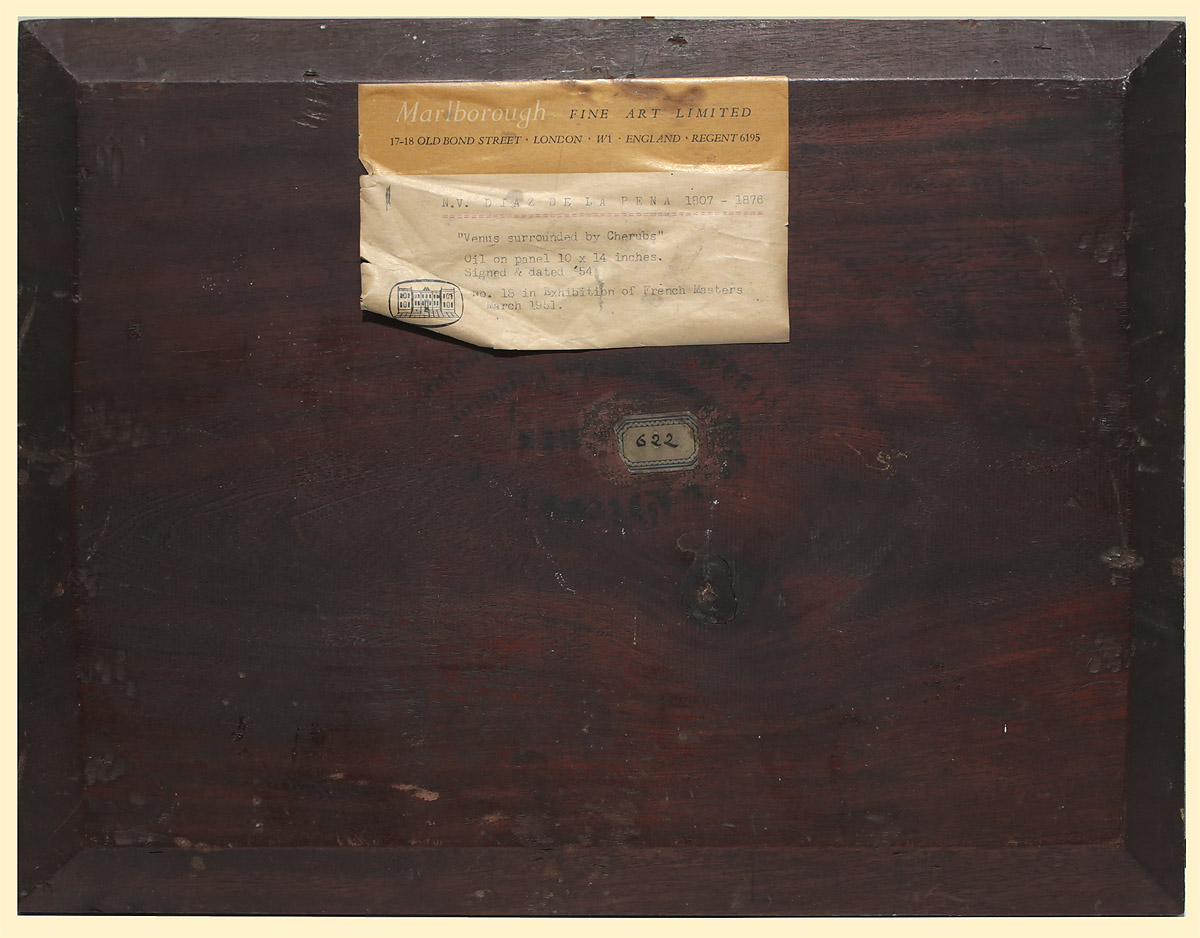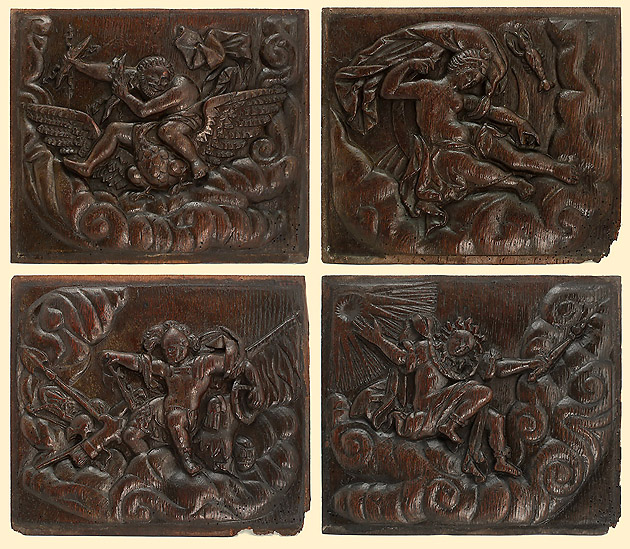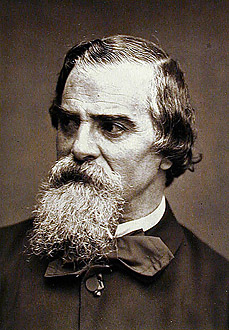
N.V. Diaz de la Pena, c1880, Woodburytype
NARCISSE VIRGILE DIAZ DE LA PEÑA : BIOGRAPHICAL INFORMATION
Narcisse Virgile Diaz de la Peña was the leading painter of the Barbizon landscape school.
The son of Spanish parents, who had fled the Peninsular Wars, he grew up in foster care at Meudon after their early deaths.
At thirteen, an infection caused by an insect sting or snake bite, necessitated the amputation of his left leg.
In 1823, he began an apprenticeship in painting on porcelain at a china factory in Paris, where he met Jules Dupré (1811-1889),
who became his lifelong friend. In the late 1820's he was briefly tutored by the history painter François Souchon (1787-1857),
copying the masters at the Louvre and supporting himself by the sale of his own small paintings.
He was further inspired by the poetry of Victor Hugo and the Near Eastern themes painted by Eugene Delacroix.
As he was unable to travel, these jewel-like images were the products of his imagination.
His early work consisted of not only pastiches of romantic "fancy pictures"--
odalisques, bathers, erotic mythologies, sentimental idylls -- but exquisite floral paintings.
From about 1833, he began to explore the forest of Fontainebleau,
becoming a regular summer visitor in the following years.
There he prolifically painted small studies of the forest with the same speed and fluency as his earlier floral and romantic idylls.
He formed a close association with Théodore Rousseau (1812-1867),
and the other landscape painters of what became known as the Barbizon School.
Awarded a first-class medal at the Salon of 1848, he was appointed chevalier of the Legion of Honor in 1851.
His paintings commanded higher prices than those of Corot, Rousseau, or Millet,
although the critics were reserved in their judgment of his work, admiring its "colorism" while considering it rather superficial.
After 1859 Diaz ceased to exhibit at the Salon.
Painters of a "new generation" - Claude Monet (1840-1926), Pierre-Auguste Renoir (1841-1919), and Alfred Sisley (1839-1899) - encountered in the forest of Fontainebleau in 1864, received his warm encouragement.
At Etretat, where he summered in 1869, he painted seascapes in the company of Gustave Courbet.
During the Franco-Prussian War of 1870-1871, he sought refuge in Brussels.
He died in 1876, aged sixty-eight, at the Mediterranean resort of Mentone.
|
